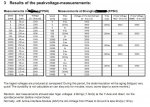Saleh
Member
- Location
- Saudi Arabia
We are facing nuisance tripping after installing new VFD to control an old motor
The VFD is Schneider ATV61HD75N4 75KW, 3P, 380-480V, 50/60Hz.
The Motor is US Motor Catalogue H100E2ES Model #R925.
The connection between the VFD and the motor is copper cable (3X70mm+35mm) in RGS conduit and it is about 40Meter. The fourth core 35mm of the cable used as grounding.
The error message on the VFD says Impedance Sh Circuit.
Otherwise that VFD is much noisier than others with lower Wattage.
How we can solve the nuisance tripping problem?
Does the Motor Choke VW3A5104 will solve it?
Awaiting your comments

The VFD is Schneider ATV61HD75N4 75KW, 3P, 380-480V, 50/60Hz.
The Motor is US Motor Catalogue H100E2ES Model #R925.
The connection between the VFD and the motor is copper cable (3X70mm+35mm) in RGS conduit and it is about 40Meter. The fourth core 35mm of the cable used as grounding.
The error message on the VFD says Impedance Sh Circuit.
Otherwise that VFD is much noisier than others with lower Wattage.
How we can solve the nuisance tripping problem?
Does the Motor Choke VW3A5104 will solve it?
Awaiting your comments





